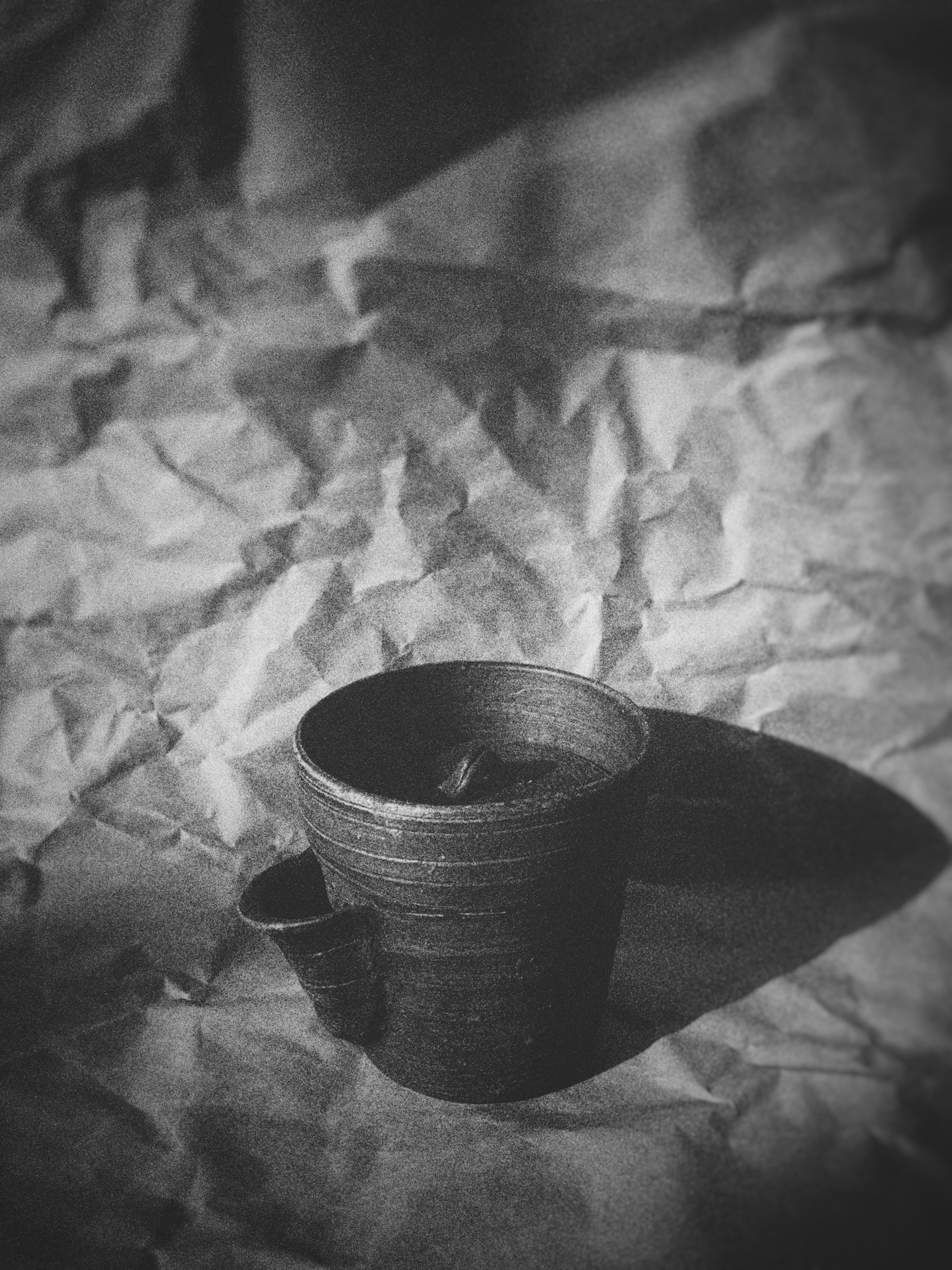The hōhin 宝瓶, or by its alternative names ‘Treasure Jar’ or ‘Treasure Bottle’, is a Japanese brewing vessel intended to be used with the highest quality of Uji 宇治 teas, such as gyokuro 玉露, kabusecha かぶせ茶, and competition-grade sencha 煎茶, all commonly brewed at a lower temperature (between 50 to 70°C). By design, such vessels generally do not feature a handle, as the chances for one to burn their fingers due to heat transfer is minimal.
In Japanese Esoteric Buddhism (Shingon 真言宗), the word hōhin is often pronounced houbyo ほうびょう, referring to a container used to hold water for empowerment – often a flower vase – in the context of kanjo 灌頂, an initiation rite intended to confirm the graduation of a student to a higher level of practice. The kanji holds the literal meaning of ‘pouring water from the top of the head’, which poetically describes the process of passing on the master’s teachings to the student.
In usage since the Edo period 江戸時代 (1603 – 1868), hōhins are traditionally seen in a formal setting, expressed through the senchadō 煎茶道 ceremony. The origin of the hōhin takes root in China and the idiosyncrasies of its tea culture, and more specifically in the gàiwǎn 蓋碗, whose form was perfected during the Ming dynasty 明朝. With the introduction of Chinese tea culture and tea-related paraphernalia to Japan (commonly referred as karamono 唐物), an appropriation through refinement then emerged and matured, leading to the creation of a unique and distinctively Japanese brewing vessel that naturally found home in the newly crafted ritualistic practice of senchadō.
Senchadō masters, practitioners, and other initiates tend to favor the use of hōhins made of porcelain, concurrently aiming for a specific aesthetic language that conveys elegance, purity, and eternity in the impermanence of things. However, the most striking pieces seem to come from the province of Bizen 備前, exhibiting well-rounded craftsmanship skills from the potters that give them life, with goma 胡麻, sangiri 桟切り, and botamochi (牡丹餅) being the most representative styles of this wood fired-based pottery. Additionally, it is not rare to see animals or vegetables being depicted and serving as knob for the lid, further magnifying the inherent, organic relationship between tea and Nature that permeates Japanese tea culture.
The most common filter found on this brewing vessel is of the doake ドア家 type, with holes made directly on the wall of the hōhin. The simplicity and unpretentiousness of such filter allow for a fast pour, although tarnished by potential inconveniences such as clogging or straining inefficiency. The overall (and often undervalued) practically and versatility that radiate from the use of hōhins – more notably stemming from their typical conic shape – certainly mitigate this weak point.
Some pieces like the vintage one pictured here feature a somewhat prominent tall profile, with the lid being recessed and sitting at a lower position, which allows the vessel to be used with hot temperatures, and consequently, with other types of tea. A more common alternative can be observed through the addition of discrete handles on each side of the vessel that exhibit a spectrum of diverse designs, which confers a similar ease of use and benefits.
Due to its inherent design and the particular traits of the tea culture that it sustains, the peculiar hōhin and its use tend to remain insular and are still, for the most part, confined to the Land of the Rising Sun. In the contrasted and expansive context of tea, frowning upon the manifest value and potential of such vessel would not be fair. Perhaps in the cousin of the gàiwǎn lies another missed opportunity to further deepen our understanding of and appreciation for the singular dynamism, creativity, and multifariousness that color all the practices and traditions of tea.
———
If you appreciate this piece of writing, please consider contributing to Le cerf-volant’s endeavor through a donation. Thank you for your unwavering and precious support.

